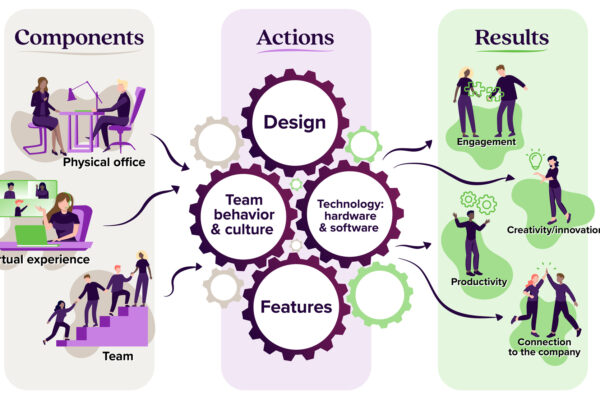
What is agile marketing?
Agile marketing has become a buzzword, but it isn’t always clearly understood. Many of us have been operating this way for years, but we didn’t have a name for it.
In the traditional marketing model, a marketing team spent weeks every autumn planning the next year’s marketing activities, which were evaluated when it was time to plan for the following year.
This model is no longer completely realistic—the pace of technological change alone keeps marketing strategy in a state of constant flux.
To be clear: we are not in any way advocating a lack of planning, and we still recommend an annual roadmap that is updated quarterly. We are, however, suggesting a certain kind of plan: the kind that lets you remain flexible so that you can adapt to changing circumstances. We may not know exactly how the business landscape will change this year for your particular industry (though we can sometimes guess), but we can be pretty certain that it will change.
To meet this challenge, we propose agile marketing.
The agile process
Agile: The ability to move or think quickly.
Agile software development was defined by the software industry as a way to work efficiently when facing a common problem—changing requirements. Agile marketing uses the same principles for marketing, where the changes are equally continual and unavoidable.
This process can be applied to both marketing strategy as a whole and to individual marketing projects.
The process:
- Break project into small, but measurable, elements
- Rank elements by importance
- Complete the most important element (or the minimum viable product)
- Measure and test
- Repeat steps 2-4
Now, let’s examine each step.
1. Break project into small, but measurable, elements
There are many ways to break a project into its elements. A general rule of thumb is that no element should take a single person more than two days to complete. If it takes longer, it needs to be broken down again.
This doesn’t mean that every part of a project is guaranteed to be completed in two days, because there will always be times when something unexpected occurs, or when a task is more difficult than it initially appeared. The more you do this, however, the more often your estimates will be correct.

Let’s say your company installs solar panels on residential houses, and plans to offer yearly energy audits to all customers across the country. Your team needs to add a large new section to the website.
Although there are infinite ways to break your project into small pieces, you might end up with a list like this:
- Define the benefits and differentiators
- Take photos and gather testimonials
- Calculate expected ROI for your company and for your customers
- Communicate the new offering to current and potential customers
2. Rank elements by importance
This is perhaps the most conflict-prone step in the process, because there are so many ways to rank the elements, and different situations will lead you to different ranking systems.
You might start with the element that can be completed most quickly, so that results start coming in quickly. You might start with the element that encompasses the most risk, so that you don’t have to worry about success throughout the entire project. Or you might choose to start with the most basic element that all the others rely on. Or the element that you have the resources for immediately. Or some combination of these. Or none of them. You can see where the conflict may arise.
Using our list from step 1, let’s assume you want to minimize the risk. You might order the elements like this:
- Calculate expected ROI for your company and for your customers
- Define the benefits and differentiators
- Take photos and gather testimonials (from market test)
- Communicate the new offering to current and potential customers
3. Complete the most important element
Even though it’s important to have a plan (both for your yearly marketing strategy and for each individual project), you never know what might change after work has started, which is where the agility can come into play.
Imagine that while you are calculating the expected ROI, you find that the cost of performing energy audits in Massachusetts is greater than the expected annual savings from your average solar panel installation. Energy audits in all other states cost significantly less.
4. Measure and test
You quickly contact your market research firm, and have them survey a sample of your target demographic in Massachusetts and several other states. The results show that people are very interested in products like yours, but only with regular audits to confirm their energy savings.
Based on these results, your team adds another step: working up a do-it-yourself option for those customers in high-cost areas.
5. Repeat
I won’t call agile marketing stress-free, but it certainly helps optimize your marketing—sometimes informing business strategy itself. By continually reevaluating your approach and roadmap, you can meet unexpected demands and a changing landscape with greater confidence.


